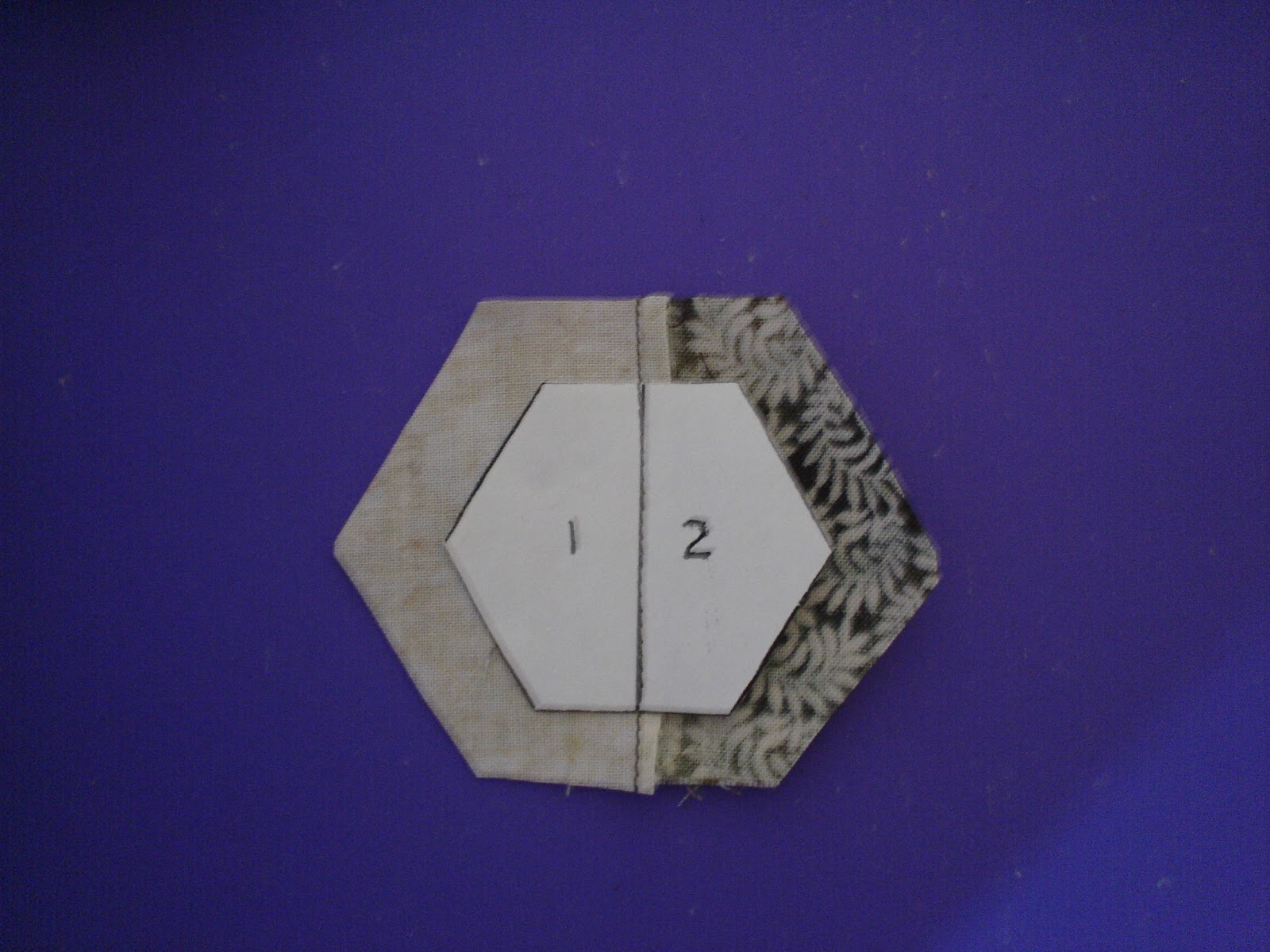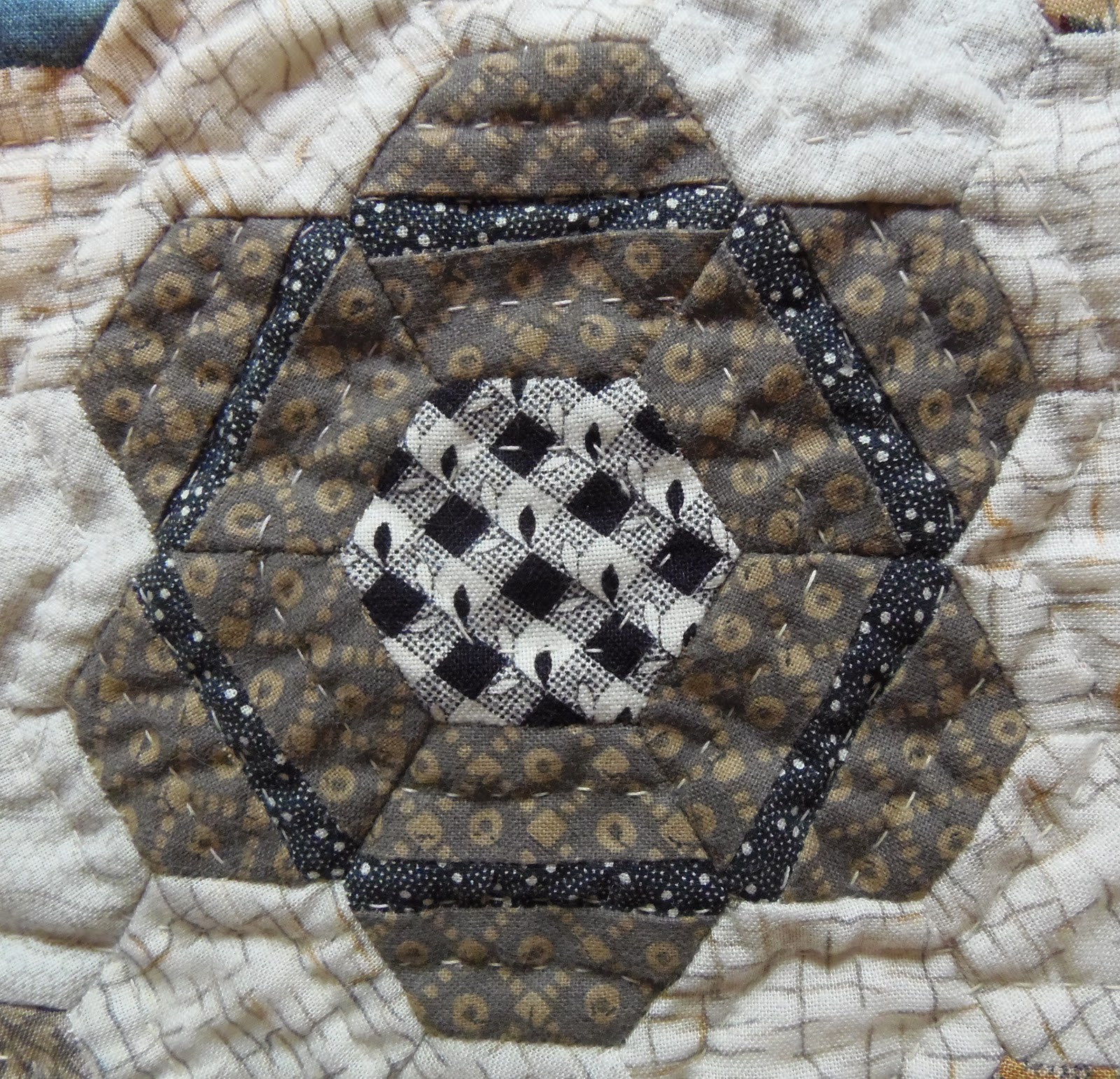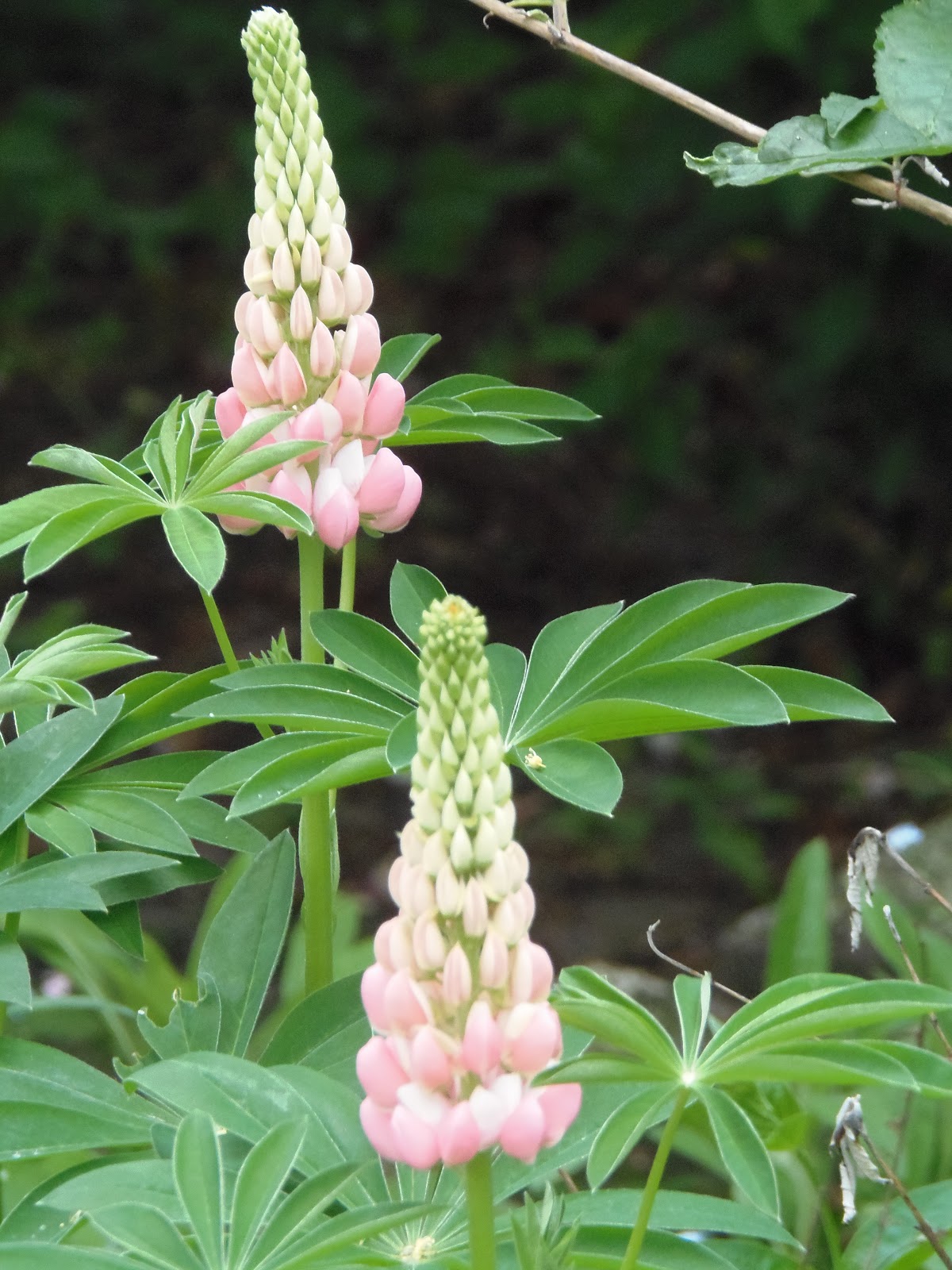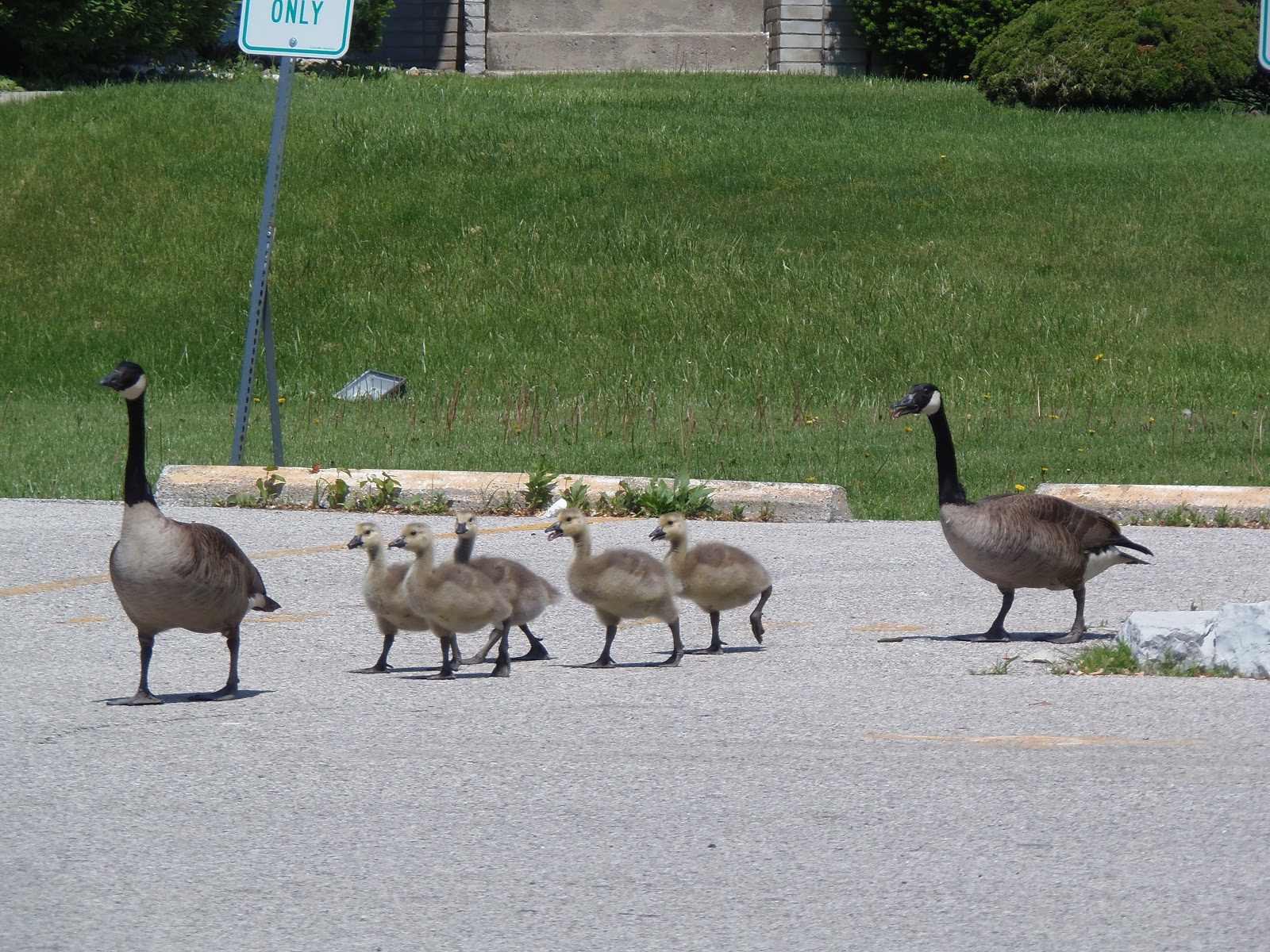Elizabeth Van Horne Clarkson, Honeycomb Quilt c. 1830
Bertha Stenge, Mosaic Quilt c. 1945
Karen Howes, Stars in the Loft c. 2002
I entered my quilt in Quilting Gallery's Show and Tell. If you would like to vote for it you can do so here! Thank you for your support!
Now back to how I made my quilt. The first two quilts were fussy cut from fabrics whereas mine were pieced. The blocks I call "firecracker" were foundation pieced on the paper hexagon before I did the English Paper Piecing. The other two used striped fabric. I decided to piece mine because it would use less fabric and I could use what was on hand rather than shop for a very specific fabric that I wasn't sure I would find.
When I paper foundation piece on my hexagons I cut the fabric larger than I need. I Although it isn't necessary for the hexagon I am about to show you, I like to number the sections so that I know what fabric goes where. It is important for blocks with more than two pieces. This is how I made Half and Half. I selected two fabrics and I place them right sides together. The hexagon is placed on the fabric making sure that there is at least 3/8" fabric beyond the paper. I shorted my stitch length and sew on the line.
You can see that this technique is perfect for chain piecing. One the hexagon is foundation pieced I fold back the hexagon (the side marked 2) and I trim the seam allowance to somewhere between 1/8" and 1/4".
Then the paper hexagon is unfolded and I trim the excess fabric from around the hexagon.
From here it is English Paper Piecing as usual!
And this is the lovely block that results!
This next hexagon is a little more complex because of the intersection in the centre. What I do is foundation piece the two sections on the right and then the long half hexagon on the left is the last piece to be stitched down. Sorry I didn't write the numbers on the hexagon to give the order of piecing but I think you probably get the idea!
Running a stripe horizontally will produce another interesting hexagon and depending on the width and position of the stripe and the colours used there are lots of possibilities!
And now some pix from out in the garden (and two from across the road)!
Big fat bee at the weigela!
Purple Lupines
Pink Lupines
Pink Columbines
White Columbines and indigenous Red Columbines
And from across the road, Mom, Dad and five babies! Dad was not pleased with me so I took a few quick pictures and then left them to relax in the shade.
Until I post again, happy sewing!
























love your columbines...we call them aquilegia here, they're my fave flowers. i bought lots of seeds last year, but unfortunately only the old ones we have every year came through lol. meaning tons of blue :( i wish i had some in red, too! yours look so different! but i do have a small amount of whites this year :)
ReplyDeleteWe had some English columbines and they had very long spurs. They were so beautify however over the years they have disappered. The red ones are the happiest of all since they are where the belong!
Deleteoh and yay for you paper-piecing the hexagons :D
ReplyDeleteI am enjoying seeing all the variations, I have only ever pieced one fabric per hexy, so I will definitely try some of your ideas, thanks for sharing.
ReplyDeleteI love it that we also share the same plants in our gardens :-)
It is a great way to use unusual shaped scraps because you don't have to worry about the grain line.
DeleteYou must have a lovely gardent! :-)
OMG .....your work is amazing.
ReplyDeleteSo wonderful.
Greetings from Germany, Grit
Thank you Grit! This is one of my favourite quilts and it was so much fun to make!
DeleteKaren
Just beginning to think about making a hexagon quilt for my sister. Haven't done paper piecing, and all of my quilts have been machine pieced and quilted. This will be a new adventure for me.
ReplyDeleteWe had columbines (wild) in our wooded lot many years ago. All red (didn't know they came in other colors in other places.) Very forgiving plants, very independent of human assistance. :)